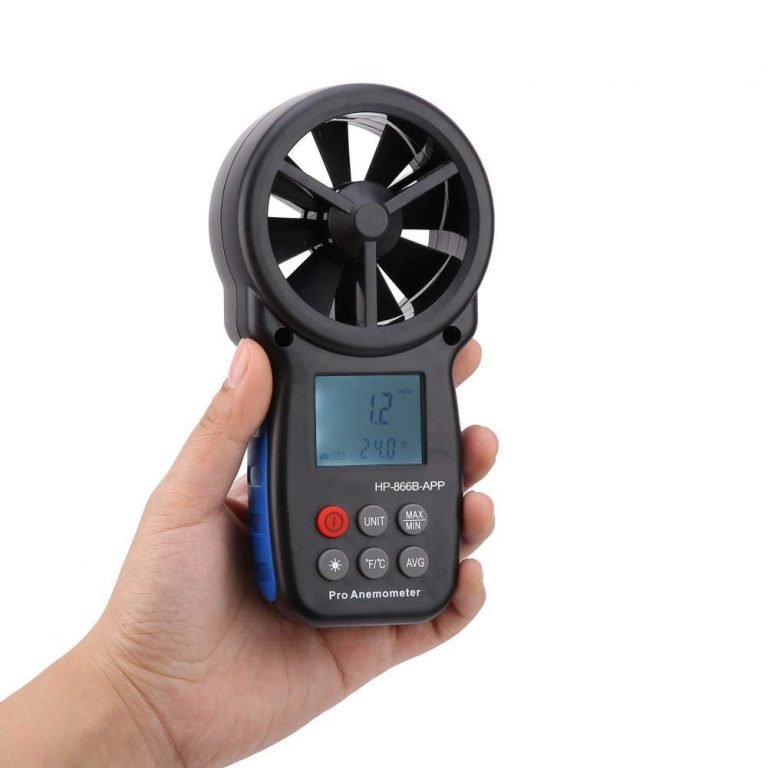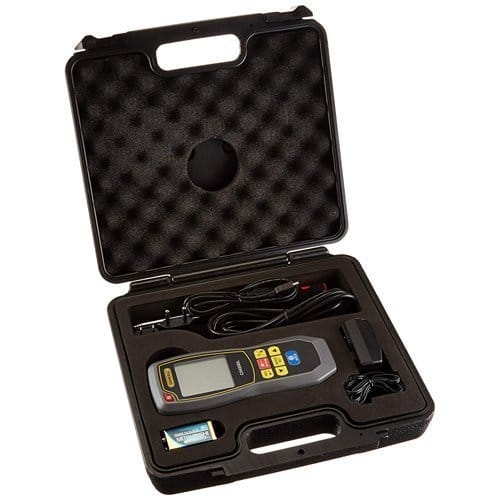We love weather and everything to do with it and today we’re going to over the most used devices and personal weather stations for measuring wind speed.
It takes precision and technology to correctly measure wind speed. There’s an intricacy to measuring wind speed and not just any old device will work.
So, let’s check out the 5 most used weather instruments for measuring wind speed and we’ll learn how each device works.
The 5 Most Used Devices for Wind Speed Measurement
I’m sure you’ve heard of anemometers before on our website and that’s because they’re a nifty device used to measure wind speed.
The term “anemometer” comes from Greek. The Greek word “anemos” means, simply, wind.
Anemometers use the unit feet per minute (or FPM) to measure wind speed.
Most anemometers are meant specifically to measure wind speed, although some may measure other variables such as temperature, wind chill, and wind direction.
There are several different types of anemometers used to measure wind speed so we’re going to check out the 5 main basic types.
Mechanical Anemometer
For a mechanical Anemometer, it’s pretty simple. Most mechanical anemometers use wind vanes.
It use to be a propeller with wind cups at the end of each blade. As the wind blows and spins the cup, and it counts how many times the cups spin for each second.
The updated version of the wind blades and wind cups is that a generator reads the wind speed.
For the handheld and portable anemometers, the wind blows and spins the propellers which have a generator. The generator sends a message to an electric current that displays the wind speed.
Check out this HoldPeak Digital Anemometer.
- This handheld anemometer measures wind speed, wind chill, and temperature with super accuracy.
- It has a super fast response time.
- This anemometer can read winds up to 69 mph.
- It uses an LCD display and back-lighting so you can still read the display during the night.
- It automatically shuts off if it hasn’t been used for a while to save batteries.
- It will alert you if your battery is running low.
- It comes with a lanyard so you can wear it around your neck, a 9V battery, and an easy to read manual for setup.
- It comes with a 1 year warranty.
For more pricing information, click on this link.
Thermal and Hot Air Anemometer
Thermal and hot air anemometers work a lot differently than most other anemometers.
Instead of measuring the wind as it moves, it measures it by the coolness of the wind.
A thermal anemometer has a thermometer. The thermometer keeps a heated wire at a specific temperature. So, when the wind blows it cools down this wire. Since it’s being cooled, the thermometer has to use energy to warm it back up.
The electricity used to warm the wire back up is measured and calculated into wind speed.
Check out the General Tools Hot Wire Data Logging Anemometer.
- This hot wire anemometer is a great weather monitor for the professional.
- It has a large LCD display shows you 3 read outs and has a back-light so you can read the screen in the dark.
- It measures both wind speed, wind direction, and the temperature.
- When this anemometer is running off batteries and it hasn’t been used in 10 minutes it will automatically turn off. If you haven’t used it for 30 minutes while running on AC power, it will automatically shut off.
For more pricing information, click on this link.
Pressure Tube Anemometer
Pressure tube anemometers are an older device created for measuring wind speed. It’s a vertical tube with a horizontal tube that’s bent at the top.
Inside the tube, there’s a membrane. When the wind pushes the horizontal tube, the membrane moves. A gauge inside measures this pressure and determines the wind speed.
Sound Wave Anemometers
Sound wave anemometers work with sound waves to measure wind speed. Wind moves the travel of sound, sometimes faster and sometimes slower, depending on which direction the wind is blowing.
The main sound wave anemometer is an ultrasonic anemometer. These anemometers have both sound transmitters and sound receivers.
When you place the ultrasonic anemometer outside and it detects the wind, the transmitters send out high frequency sounds to the receivers.
There are electrical currents inside of the receivers that measure the speed of the sound it’s receiving. Then it determines the speed of the wind based on this time and the direction of the wind.
The least accurate sound wave anemometer is the acoustic anemometer.
Instead of measuring how long it takes for the sound to travel, an acoustic anemometer measures the actual changes in the sound waves.
Laser Anemometer
A laser anemometer uses a laser beam that’s split in half by a mirror, into 2 laser beams. One laser beam is considered a reference beam and remains undisturbed.
The second laser beam is moved by the wind. Once it’s been changed, both lasers are reemerged back together. The noticeable difference in the laser beams is referred to as a “set of interference fringes”.
The set of interference fringes can be calculated and measured into the speed of the wind.
Doppler Radar Anemometer
Doppler radars were created to measure both wind speed and wind direction.
A Doppler Anemometer sends out an infrared laser beam that splits into 2 beams, much like the laser anemometer. The first laser beam is used as a reference to measure against the second beam and is beamed
The second infrared laser beam is what’s used to measure the wind. When wind hits the laser beam, it moves the particles and changes in frequency compared to the reference beam. This frequency is what’s known as a “Doppler shift”.
The Doppler shift can be measured into wind speed.
The Bottom Line
There are tons of products out there made to measure wind speed. We hope this helps you decide what type of anemometer you should invest in.



